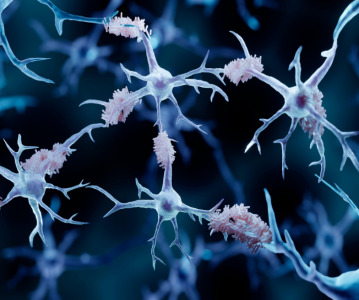New Phase III Psoriasis Data Show Rapid, Significant Skin Clearance and Convenient Administration with Novartis' Secukinumab (AIN457)

Novartis announced results from the pivotal phase III FEATURE and JUNCTURE studies showing secukinumab (AIN457), an interleukin-17A (IL-17A) inhibitor, demonstrated consistent high efficacy when administered with a convenient pre-filled syringe (PFS) or autoinjector/pen (AI)[1],[2].These results, along with patient-reported outcomes showing high patient satisfaction with PFS and AI[3],[4], are being presented for the first time at the 72nd Annual Meeting of the American Academy of Dermatology (AAD) in Denver, USA.
FEATURE and JUNCTURE are the first Phase III studies to evaluate secukinumab in clearing patients' skin with the PFS and AI administration[1],[2]. Both methods allow secukinumab self-administration anywhere (including the workplace or home) versus healthcare professional administration, if allowed by local regulations. This is important because many psoriasis patients prioritize easy self-administration at a location of their choice[6].
"It is important that people living with psoriasis, a chronic skin disease, have highly effective and safe treatments they can conveniently self-administer," said Tim Wright, Global Head of Development for Novartis Pharmaceuticals. "These exciting results from our specialty dermatology portfolio show that secukinumab, the first IL-17A inhibitor with regulatory submissions completed, had similar efficacy in clearing skin with a convenient pre-filled syringe and autoinjector pen as in the landmark FIXTURE study, where it was significantly superior to Enbrel, a biologic psoriasis therapy approved 10 years ago."
Importantly, in both studies more secukinumab 300 mg patients experienced almost clear skin, described as Psoriasis Area and Severity Index 90 (PASI 90), at Week 12 (60.3% for FEATURE and 55% for JUNCTURE, p<0.0001) compared to placebo[1],[2]. PASI 90 is considered the best evidence of efficacy, and a more robust measure of the extent of skin clearance compared to standard efficacy measures that have been used in most psoriasis clinical studies, such as PASI 75[7].
The FEATURE and JUNCTURE studies met all primary and pre-specified secondary endpoints[1],[2]. Across the co-primary endpoints in both studies, secukinumab 300 mg demonstrated significant improvements in PASI 75 at Week 12 versus placebo (75.9% vs. 0% for FEATURE; 86.7% vs. 3.3% for JUNCTURE, p<0.0001), and was also superior to placebo according to the Investigator's Global Assessment (IGA mod 2011)[1],[2].
Patients also benefitted from rapid and significant skin clearance with secukinumab in both studies[1],[2]. Already by Week 3, patients taking secukinumab 300 mg experienced superior efficacy in clearing skin compared to placebo[1],[2]. In addition, the 300 mg dose showed numerically and clinically relevant improvements compared to 150 mg[1],[2].
Both studies measured usability and patient satisfaction with secukinumab delivered via PFS and AI[3],[4]. At Week 1, all patients successfully self-injected secukinumab by following instructions, with no administration issues observed[3],[4]. Patient satisfaction scores were consistently high, showing acceptability of the PFS and AI[3],[4]. Satisfaction was assessed using a self-administered Self-Injection Assessment Questionnaire (SIAQ), which measures overall experience, feelings about injections, self-confidence, satisfaction with self-injection, injection-site reactions, ease of use, and self-image before and after treatment[3],[4].
Secukinumab demonstrated a positive safety profile consistent with findings from previous studies, with adverse events (AEs) similar between both secukinumab treatment arms (300 mg and 150 mg)[1],[2]. In FEATURE, the most common AEs in any treatment group were diarrhea, nasopharyngitis and headache[1]. In JUNCTURE, the most common AEs in any treatment group were nasopharyngitis, headache and pruritus[2]. There were no deaths reported during either study, and no new or unexpected safety findings were observed[1],[2].
The FEATURE and JUNCTURE results support the head-to-head phase III FIXTURE data first presented in October 2013, which showed secukinumab cleared skin faster and for longer than Enbrel(etanercept)[5]. Clinically relevant differences were observed as early as Week 2 in FIXTURE, and by Week 16 nearly three quarters (72%) of secukinumab 300 mg patients experienced almost clear skin (PASI 90)[5]. Secukinumab efficacy was also sustained over the full one year study, with significantly more secukinumab 300 mg patients experiencing PASI 90 at Week 52 compared to Enbrel (65% vs. 33%)[5].
ReferencesReferences
[1] Blauvelt A, et al., Secukinumab Efficacy and Safety: Results From the First Study of Secukinumab in Prefilled Syringes in Subjects with Chronic Plaque-Type Psoriasis Response at 12 Weeks (FEATURE). E-poster presentation at: 72nd AAD Annual Meeting; Denver, Co.; 21-25 March 2014.
[2] Paul C, Lacour JP, Cooper S., Secukinumab Efficacy and Safety: Results From the Judging the Efficacy of Secukinumab in Patients With Psoriasis Using Autoinjector: A Clinical Trial Evaluating Treatment Results (JUNCTURE). E-poster presentation at: 72nd AAD Annual Meeting; Denver, Co.; 21-25 March 2014.
[3] Kingo K, et al., Secukinumab Prefilled Syringes Demonstrate Patient Satisfaction: Analysis of the Self-Injection Assessment Questionnaire (SIAQ) in the FEATURE Study. E-poster presentation at: 72nd AAD Annual Meeting; Denver, Co.; 21-25 March 2014.
[4] Kreutzer K, et al., Secukinumab Autoinjectors Demonstrate Patient Satisfaction: An Analysis of the Self-Injection Assessment Questionnaire (SIAQ) in the JUNCTURE Study. E-poster presentation at: 72nd AAD Annual Meeting; Denver, Co.; 21-25 March 2014.
[5] Langley R, et al., Secukinumab Compared With Placebo and Etanercept: A Head-to-Head Comparison of Two Biologics in a Phase 3 Study of Moderate-to-Severe Plaque Psoriasis (FIXTURE). Oral presentation at: 22nd EADV Congress; Istanbul, Turkey; 2-6 October 2013.
[6] Schaarschmidt ML, et al., Patient preferences for psoriasis treatments: process characteristics can outweigh outcome attributes. Arch Dermatol 2011 Nov;147(11):1285-94.
[7] www.ema.europa.eu/docs/en_GB/document_library/
Scientific_guideline/2009/09/WC500003329.pdf Accessed March 2014.
Related News
-
News BioNTech to begin mRNA vaccine manufacturing in Rwanda by 2025
German biotechnology company BioNTech has stated their intentions to begin production at their mRNA vaccine factory in Rwanda by 2025, which will mark the first foreign mRNA vaccine manufacturing site on the continent of Africa. -
News Identifying Alzheimer’s Disease biomarker proteins with whole blood tests
A University of Manchester spin-out pharmaceutical company, PharmaKure, has reported successful study results for the quantification of Alzheimer’s Disease biomarker proteins with a whole blood test. -
News Bill & Melinda Gates Foundation to boost mRNA vaccine initiatives in Africa with USD $40m
To address vaccine inequality and accessibility issues, the Bill & Melinda Gates Foundation aims to deliver USD $40m to various biotech companies and vaccine manufacturers in support of mRNA vaccine development. -
News CPHI Podcast Series: Exploring neurological frontiers in Alzheimer's and beyond
The next episode of the CPHI Podcast Series delves into the science and background behind some recent developments in the field of Alzheimer's disease and neurological disorders. -
News Is patient centricity the future of pharmaceutical manufacturing?
In this interview with Sandra Sánchez y Oldenhage, President of PharmAdvice, she speaks to the importance of considering patients in the manufacturing stages of the pharmaceutical supply chain, and how it can redefine healthcare. -
News CPHI Podcast Series: How to leverage AI for Drug Discovery
Artificial intelligence is the topic of debate in the latest episode from the CPHI Podcast Series, where Digital Editor Lucy Chard speaks with Bill Whitford of DPS Group about the integration of AI in healthcare. -
News Pfizer forges ahead with blood cancer therapy after approval from FDA
Pfizer gains accelerated approval from the US FDA for their new bispecific antibody therapy for multiple myeloma, set to address an unmet need for patients. -
News Alzheimer's drug donanemab deemed effective in landmark clinical trial
Results from the TRAILBLAZER-ALZ 2 Randomised Clinical Trial into the use of donanemab to treat early symptoms of Alzheimer’s disease have been analysed.
Position your company at the heart of the global Pharma industry with a CPHI Online membership
-
Your products and solutions visible to thousands of visitors within the largest Pharma marketplace
-
Generate high-quality, engaged leads for your business, all year round
-
Promote your business as the industry’s thought-leader by hosting your reports, brochures and videos within your profile
-
Your company’s profile boosted at all participating CPHI events
-
An easy-to-use platform with a detailed dashboard showing your leads and performance







